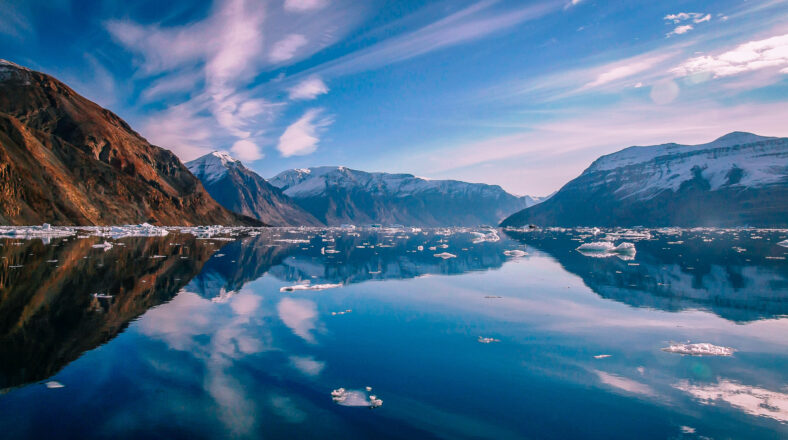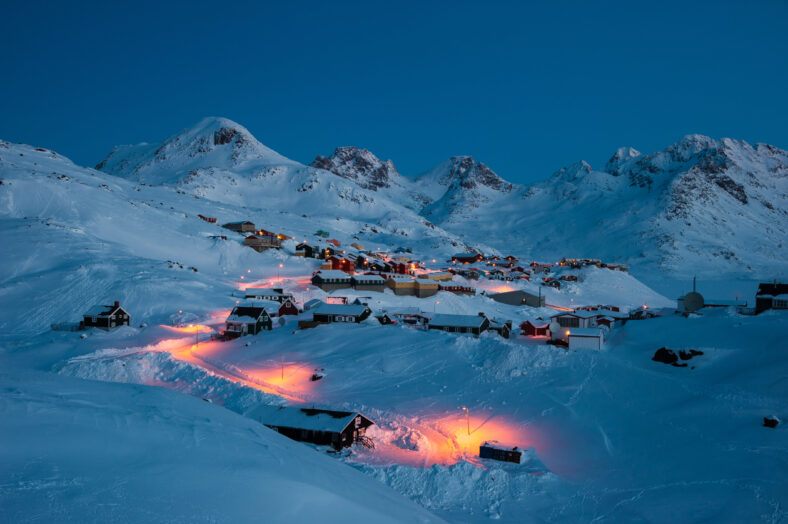Greenland Is Getting Taller Because It’s Losing Ice At A Rapid Rate

As the ice sheet covering Greenland melts, the island’s bedrock is rising, a process called glacial isostatic rebound. The phenomenon is nothing new—Greenland has been lifting up since the last ice age about 11,700 years ago.
But now, modern-day climate change is causing Greenland to lose its ice at a more rapid rate. Each year, the Greenland Ice Sheet is shedding roughly 262 gigatons of ice, taking a lot of weight off the island.
In addition, the peripheral glaciers, which are the ice rivers at the coastline that flow into the sea, are losing about 42 gigatons of ice.
A new study has shown that the glacial ice loss is a major contributor to the uplift of Greenland’s bedrock. In certain areas, the glacial ice loss is responsible for almost a third of the vertical land motion.
“The maximum land uplift is where you have the most mass loss, and that’s closest to the biggest glaciers in Greenland,” said Danjal Longfors Berg, a doctoral student at the Technical University of Denmark.
The research team used data from 58 GPS monitors that have been drilled into Greenland’s bedrock since 2007.
The monitors measure vertical motion. Then, they calculated how much of the movement was from recent ice loss and how much was from the longer-term rebound.
The results revealed that the ice loss played a significant part in large areas of Greenland’s rise. In two drainage basins in the northern and eastern portions of the landmass, ice loss led to 32 percent and 27.9 percent of the total rebound.
The largest rate of rising bedrock was seen near Kangerlussuaq Glacier in southeast Greenland. There, the ground is lifting at about 0.3 inches per year. Since 1900, that glacier’s range has decreased by 6.2 miles and thinned by hundreds of feet.

Sign up for Chip Chick’s newsletter and get stories like this delivered to your inbox.
“What we’re seeing is a synchronized response of Greenland’s glaciers to widespread warming,” said Chad Greene, the lead author of the study and a glaciologist at the NASA Jet Propulsion Laboratory.
“Nearly every glacier in Greenland has retreated over the past few decades, and they’re showing no sign of slowing down.”
Overall, Greenland is losing ice 20 percent faster than previously estimated. It is faster than the current and projected sea level rise around Greenland, meaning that new land will start to emerge in the near future.

The ice loss has consequences that extend beyond Greenland. As the ice melts, large amounts of freshwater are flowing into the ocean, potentially disrupting the Atlantic Meridional Overturning Circulation, which is a system of currents that includes the Gulf Stream.
The Gulf Stream carries warm tropical waters to the southeast coast of the United States and parts of Europe, making water temperatures milder. The rapid melting of Greenland’s ice could begin affecting global water temperatures as well.
More About:News